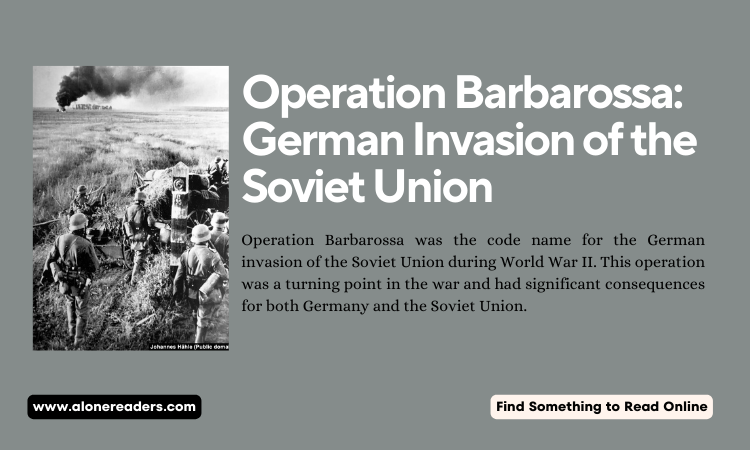
Operation Barbarossa was the code name for the German invasion of the Soviet Union during World War II. It was launched on June 22, 1941, and marked the largest military operation in history in terms of the number of troops involved, the scale of the front, and the intensity of the fighting. This operation was a turning point in the war and had significant consequences for both Germany and the Soviet Union.
Motivated by Adolf Hitler's ideological beliefs and the desire for Lebensraum (living space) in the east, Operation Barbarossa aimed to destroy the Soviet Union as a political and military power. The German High Command, led by General Adolf Hitler, planned a massive blitzkrieg (lightning war) strategy to quickly defeat the Soviet forces and capture key strategic objectives. The operation involved three army groups: Army Group North, Army Group Center, and Army Group South, which consisted of a total of about 3 million German soldiers supported by Axis allies.
The initial phase of the operation witnessed rapid German advances, catching the Soviet forces by surprise and inflicting heavy losses. The Luftwaffe (German air force) played a crucial role in achieving air superiority and providing close air support to the ground forces. The Germans rapidly encircled and captured vast territories, including the Baltic states, Belarus, and parts of Ukraine.
However, despite the initial success, Operation Barbarossa faced numerous challenges and ultimately failed to achieve its primary objectives. Several factors contributed to the German setbacks. The vastness of the Soviet Union presented logistical challenges for the German forces, as supply lines stretched over long distances. The harsh Russian winter and the Soviet Union's scorched-earth policy, in which they destroyed resources to hinder the advancing German forces, further hampered the German offensive.
Additionally, the Soviet Union's ability to mobilize its resources, including its large population and industrial capacity, played a crucial role in the eventual Soviet counteroffensive. The Soviet forces adopted a strategy of strategic retreat, luring the Germans deeper into the Soviet territory while launching counterattacks at critical moments. The Battle of Moscow in late 1941 and early 1942 marked a turning point, as the Soviets successfully defended the capital and inflicted heavy casualties on the German forces.
As the war progressed, Operation Barbarossa turned into a protracted and brutal conflict. Both sides suffered immense human and material losses. The German forces faced increased resistance from Soviet partisan groups, who engaged in sabotage and guerrilla warfare behind the front lines. The war in the east became a battle of attrition, with the Soviets gradually pushing back the German forces and launching major offensives, such as the Battle of Stalingrad and the Battle of Kursk.
Operation Barbarossa ultimately failed to achieve its objectives of destroying the Soviet Union and securing a swift victory for Germany. The Soviet Union's resilience, combined with strategic errors and overextension of German forces, played a decisive role in the outcome. The failure of Operation Barbarossa marked a turning point in the war, as the Soviet Union gradually gained the upper hand and began pushing the Germans back towards their own borders.
The operation had far-reaching consequences for both Germany and the Soviet Union. It significantly weakened the German war machine and diverted resources from other fronts, ultimately contributing to Germany's defeat in the war. For the Soviet Union, the war on the Eastern Front was a costly victory, resulting in the loss of millions of lives and immense destruction. However, it solidified the Soviet Union's status as a major world power and set the stage for its eventual triumph over Nazi Germany.